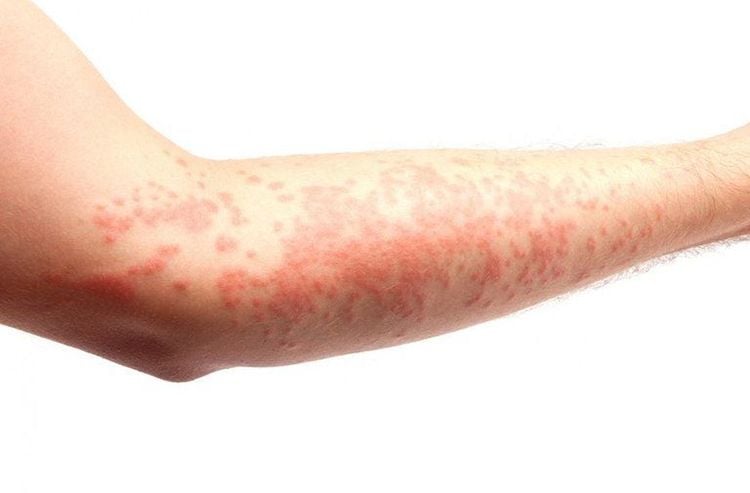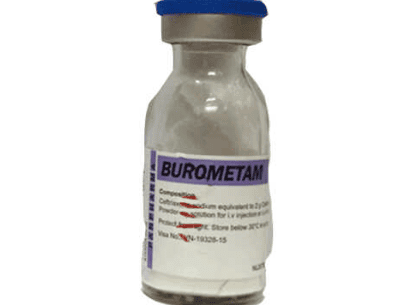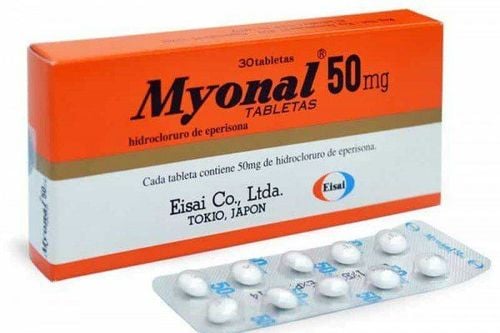This is an automatically translated article.
A penicillin allergy is an overreaction of the immune system to the antibiotic penicillin and other related drugs. This is the most common type of drug allergy, which can cause a range of symptoms from hives to anaphylaxis, which can be life-threatening.1. Overview
Penicillin allergy is an abnormal reaction of the immune system to the antibiotic penicillin. Penicillin is often prescribed to treat bacterial infections.
Common signs and symptoms of a penicillin allergy include hives, rash, and itching. A severe reaction can lead to anaphylaxis - a condition that affects many systems of the body and is life-threatening.
Research has shown that penicillin allergy is prone to being misdiagnosed. This confusion will lead patients to use alternative antibiotic treatments that are less suitable and more expensive. Therefore, if a penicillin allergy is suspected, an accurate diagnosis is essential to ensure the optimal choice of treatment for the patient in the future.
Other antibiotics, especially those with chemical properties similar to penicillin, are also capable of causing allergic reactions.
2. Symptoms
Signs and symptoms of a penicillin allergy usually appear within 1 hour of taking the medication. It is also possible for a reaction to occur hours, days or even weeks later, but this is less common.
Signs and symptoms of a penicillin allergy include:
Rash; Hives; Itchy; Fever; Swelling; Shortness of breath; Wheezing; Have a runny nose; Itchy eyes, watery eyes; Anaphylaxis .

Dị ứng penicillin ảnh hưởng đến cơ thể và tính mạng con người
2.1. Anaphylaxis
Anaphylaxis is a rare, life-threatening allergic reaction that causes widespread dysfunction throughout the body system. Signs and symptoms of anaphylaxis include:
Constriction of the airways and throat, causing difficulty breathing; Nausea or abdominal cramps; Vomiting or diarrhea; Dizziness or fainting; Weakened limbs, rapid pulse; Lower blood pressure; Epileptic; Loss of consciousness.
2.2. Delayed penicillin allergic reaction
Although less common, an allergic reaction to penicillin can still occur days or weeks after exposure to the drug, sometimes continuing for a while even after you stop taking it. Other possible diseases from Penicillin allergy include:
Serum sickness: Causes fever, joint pain, rash, swelling and nausea; Drug-induced anemia: Decreased red blood cells, fatigue, irregular heartbeat, shortness of breath, and other signs and symptoms; Drug reaction with eosinophilia and systemic symptoms (DRESS): Leads to rash, increased white blood cell count, swelling of the whole body or lymph nodes, and recurrence of infectious hepatitis; Stevens-Johnson Syndrome (Acute Atopic Dermatitis) and Toxic Epidermal Necrolysis: Collectively SJS/TEN, associated with severe blistering and peeling of the skin; Nephritis: May cause fever, blood in the urine, swelling, confusion and other symptoms
2.3 Distinguishing side effects from penicillin allergy
Like other drugs, penicillin can also cause side effects that are not an allergic reaction to the drug. Depending on the type of penicillin, the symptoms will also vary, but in general, common side effects that users often encounter include:
Nausea; mild diarrhea; Headache; Vaginal itching. In addition, manifestations of the infection you are being treated for, or other unrelated symptoms, are often mistaken for an allergic reaction to penicillin.
3. Cause
A penicillin allergy occurs when your immune system becomes hypersensitive to the drug. This is when the body mistakes a drug for a harmful substance, then reacts against them as it would for viral or bacterial infections.
Before your immune system becomes sensitive to penicillin, you must be exposed to the drug at least once. If the immune system mistakenly identifies penicillin as a harmful substance, antibodies against the drug are developed. This doesn't mean you have to ever take penicillin, though, as some evidence suggests that small amounts of penicillin found in foods are enough for the immune system to make antibodies.
During the next drug or indirect penicillin exposure, specific antibodies will mark and let the immune system attack the penicillin directly. This mechanism of action releases chemicals that are responsible for the symptoms associated with an allergic reaction.
Risk factors Although anyone can have an allergic reaction to penicillin, a few factors increase the risk such as:
Having a history of allergies, such as food allergies or rhinitis allergies (hay fever); Have had an allergic reaction to another medicine; Family members also have drug allergies; Exposure to high doses of penicillin, repeated or prolonged use; Have certain medical conditions associated with allergic drug reactions, such as HIV infection or the Epstein-Barr virus (EBV).
4. Penicillin and related drugs
Penicillin belongs to a group of antibacterial drugs known collectively as beta-lactam antibiotics. Although the mechanism of action of each drug is different, they generally fight infection by attacking the bacterial cell walls. In addition to penicillins, cephalosporins, another group of beta-lactams, are also commonly associated with allergic reactions.
If you have had an allergic reaction to one type of penicillin, you are most likely allergic to other penicillins or to some cephalosporins.
Penicillins include:
Amoxicillin; Ampicillin; Dicloxacillin; Nafcillin; Oxacillin; Penicillin G; Penicillin V; Piperacillin; Ticarcillin. Cephalosporins include:
Cefaclor; Cefadroxil; Cefazolin; Cefdinir; Cefepime (Maxipime); Cefotetan; Cefprozil; Cefuroxime; Cephalexin (Keflex).
5. Prevention
If you have a penicillin allergy, the simplest prevention is to avoid the medication. You should also consider taking the following steps to protect yourself:
Always inform healthcare workers, including dentists, of a penicillin or any other drug allergy. ; Wear a medical alert bracelet that identifies a drug allergy to ensure appropriate treatment in an emergency. If you experience signs or symptoms of a penicillin allergy, you should see your doctor as soon as possible for an evaluation, as well as an explanation of the allergic reaction and typical side effects. In the event of signs of a serious reaction or suspicion of anaphylaxis after taking penicillin, call 911 or get the patient to the nearest medical facility immediately.
To book an appointment for your baby's examination and vaccination at Vinmec International General Hospital, you can contact HERE.
Articles refer to the source: Mayoclinic.org
MORE:
Dealing with anaphylaxis What is eosinophilia? Is it dangerous? Stevens-johnson syndrome: causes, symptoms, diagnosis and treatment













